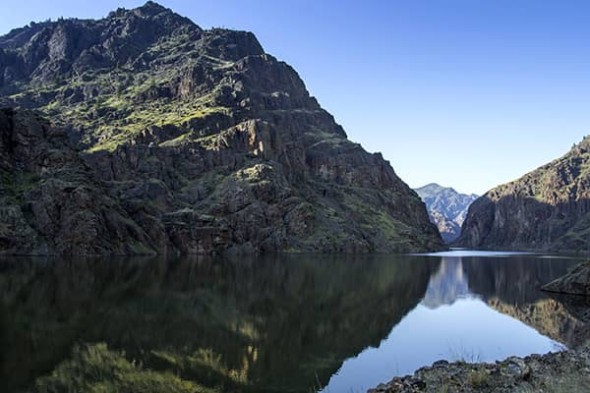Where Our Energy Comes from: Hells Canyon Hydro Power
Posted on July 19, 2022 by Will Gehrke
Tags, Energy

Where does our energy come from? Here at CUB, much of our work is predicated on the belief that shedding light on this question for utility customers is good for their interests. In this blog, CUB explains the role of the Hells Canyon Hydroelectric facility.
Many of our readers are probably aware that a sizable portion of the power generated in the Pacific Northwest is hydroelectric. But some may be surprised to learn how much of Idaho Power’s electricity comes from the Hells Canyon Dam in Idaho and Oregon.
Hells Canyon is a ten-mile canyon located on the border between Oregon and Idaho. The Snake River carved Hells Canyon over thousands of years. It is the deepest river gorge in North America. Idaho Power owns three hydroelectric facilities in this river gorge known as the Hells Canyon River project.
The Hells Canyon hydroelectric project is an important resource for Idaho Power customers. At a combined capacity of 1167 megawatts, the Hells Canyon facility is the largest hydroelectric facility owned by Idaho Power. Idaho Power owns more hydro generation resources than its peer utilities in Oregon. Their lack of fuel costs is a big factor leading Idaho Power to have lower electric rates than Pacific Power and Portland General Electric.
In addition to powering the homes of Idaho Power customers, the Hells Canyon facility also provides flood control on the Snake River and whitewater recreation areas. It does not have navigation locks for river barge traffic.
Idaho Power also owns several other hydroelectric facilities. Construction of one such facility, the Brownlee Dam, created the Brownlee Reservoir. Brownlee is a 13,000-acre water reservoir that stretches nearly fifty miles. The reservoir is used to store water to enhance the value of electricity generation. Electricity generation at the dam is more valuable when backed by a water reservoir. However, Idaho Power frequently adjusts the water levels in the reservoir to meet its legal obligations to supply water for irrigation, flood control, recreation, wildlife stewardship, and other uses.
While the Hells Canyon dams are an economical resource for Idaho Power’s customers, these facilities have had an impact on fish and wildlife in the region. The Hells Canyon facilities present a major barrier to the passage of salmonoid fish. There is no fish passage equipment located in Hells Canyon. In effect, the Hells Canyon dams block fish passage to the entire upper Snake River. Runs of sockeye salmon and chinook salmon have declined since the Hells Canyon dams were built in the 1950s and ‘60s.
This blog is part of an ongoing CUB Blog series exploring where our energy comes from. Visit the following links to see past installments in this series!
- The Clackamas River
- Columbia County
- Columbia Gorge Wind
- Geothermal
- Biomass
- The Klamath River
- Lewis River Hydro
To keep up with CUB, like us on Facebook and follow us on Twitter!





07/19/22 | 0 Comments | Where Our Energy Comes from: Hells Canyon Hydro Power